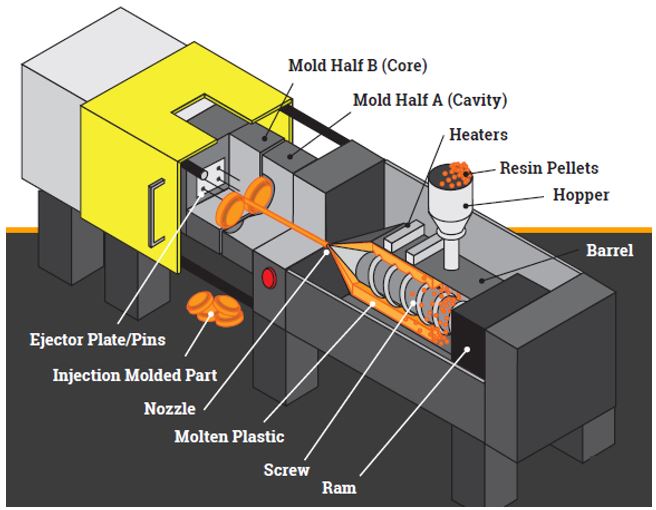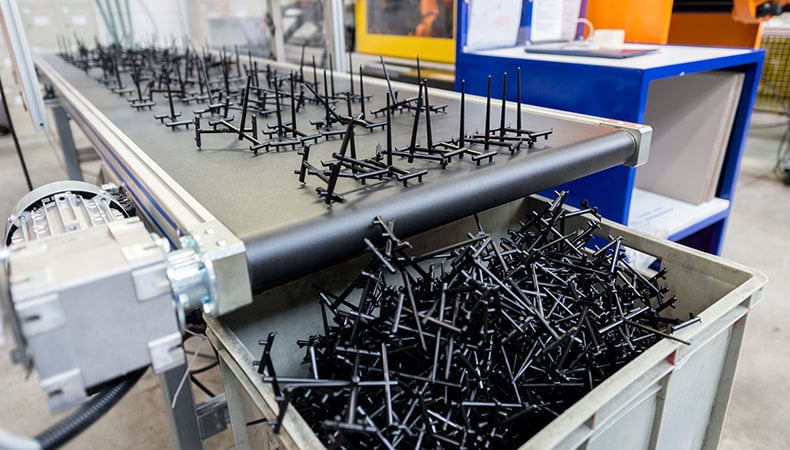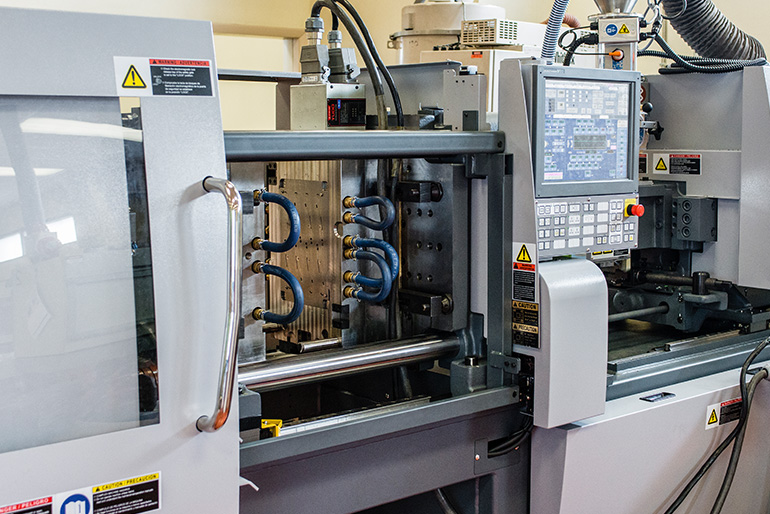Enhancing Item Advancement with Advanced Plastic Injection Molding Solutions
Enhancing Item Advancement with Advanced Plastic Injection Molding Solutions
Blog Article
Recognizing the Basics of Plastic Shot Molding Procedures
Plastic injection molding serves as a cornerstone of modern-day manufacturing, giving a methodical approach to creating complex components with accuracy. Checking out these vital aspects might reveal exactly how even small changes can lead to considerable renovations in production end results, increasing inquiries regarding the possibility for development in this well established process.
What Is Plastic Shot Molding?
Plastic shot molding is an extensively used production procedure that changes thermoplastic and thermosetting products into exact and complex forms. This method is preferred for its capacity to produce high quantities of identical parts with extraordinary precision, making it an indispensable approach in numerous sectors, including automobile, customer items, and clinical devices.
The process entails melting the selected plastic product and infusing it right into a mold and mildew under high pressure. The mold and mildew, designed to the specifications of the desired component, permits the molten plastic to form as it cools down and strengthens. When the material has solidified, the mold and mildew is opened up, and the completed part is ejected.
Plastic injection molding uses several advantages, including decreased waste, uniformity in production, and the capability to include elaborate layouts that might be challenging with various other producing techniques. Furthermore, it sustains a broad variety of products, each offering special residential or commercial properties that can be tailored for details applications. As industries proceed to innovate, plastic shot molding stays at the forefront, making it possible for the growth of innovative items that meet evolving customer needs.
The Shot Molding Refine
The shot molding process is an innovative technique that involves a number of essential phases to produce top quality plastic elements. At first, plastic pellets are fed into a heated barrel where they are merged a viscous fluid. This molten plastic is after that injected under high pressure right into a precision-engineered mold and mildew, which shapes the product right into the preferred form.
Once the mold and mildew is filled, the plastic is allowed to cool down and strengthen, taking the shape of the mold and mildew tooth cavity. Air conditioning time is critical, as it affects the cycle time and the last homes of the shaped part. After enough air conditioning, the mold opens up, and the completed part is expelled using ejector pins.

Materials Utilized in Shot Molding
Various products can be used in the injection molding process, each offering distinct properties that satisfy details applications. One of the most typically made use of products include thermoplastics, thermosetting plastics, and elastomers.

Thermosetting plastics, like epoxy and phenolic materials, undertake a chemical modification during the treating process, causing a stiff, stringent framework. These materials are suitable for applications needing high warm resistance and architectural stability, usually made use of in electrical insulators and automotive parts.
Elastomers, consisting of silicone and redirected here rubber-based materials, offer flexibility and durability. Their special residential or commercial properties make them appropriate for applications that demand flexibility, such as gaskets and seals.
In addition, specialized products like bio-based plastics and composites are obtaining grip for their environmental benefits and enhanced performance qualities, expanding the scope of shot molding applications in different markets. Comprehending the residential properties of these materials is important for picking the proper type for particular tasks.
Advantages of Shot Molding
Shot molding attracts attention as a highly reliable manufacturing process that provides many benefits for producing complicated components with precision. One of the discover here most considerable advantages is the capability to create complex styles that would certainly be challenging or impossible to achieve with various other techniques (Plastic Injection Molding). The procedure permits limited resistances and detailed attributes, guaranteeing premium components
Additionally, injection molding is known for its rapid manufacturing capacities, making it a suitable selection for high-volume production. Once the mold and mildew is created, parts can be produced rapidly, decreasing preparations and enhancing general efficiency. This performance not just decreases production costs however also supplies a competitive edge in the market.
The flexibility of materials utilized in injection molding even more improves its appeal. A vast array of thermoplastics and thermosetting polymers can be used, permitting suppliers to select materials that finest fulfill their certain needs, consisting of adaptability, heat, and strength resistance.
Furthermore, the procedure reduces waste, as excess material can commonly be recycled and recycled. This sustainability aspect adds to a lowered environmental influence, making injection molding a liable manufacturing option. On the whole, the benefits of shot molding make it a preferred technique for several industries.
Variables Affecting Item High Quality
While countless elements can affect product top quality in shot molding, comprehending these components is important for accomplishing optimal outcomes. Key facets include material selection, processing parameters, and mold and mildew design.
Material choice plays a vital function, as different polymers display unique properties that affect flowability, stamina, and thermal stability. Poor material choice can result in issues such as bending or incomplete filling.
Handling parameters, including temperature level, cycle, and pressure time, have to be thoroughly controlled. Variants in these settings can lead to incongruities in component dimensions and surface coating. Excessively high temperatures might cause deterioration of the polymer, while poor stress can result in short shots.
Mold and mildew layout is equally important, as it determines the flow of the molten plastic and the cooling procedure. Improperly made molds may bring about unequal cooling rates, leading to recurring anxieties and dimensional mistakes.

Final Thought
In verdict, plastic injection molding acts as an important production process that allows the effective production of top quality components. Mastery of the shot molding process, consisting of the understanding of products and the impact of numerous elements on product top go to this website quality, is crucial for accomplishing optimal results. The benefits of this method, such as cost-effectiveness and style flexibility, more underscore its relevance across multiple industries, solidifying its status as a favored choice for high-volume production.
Plastic shot molding offers as a cornerstone of modern-day manufacturing, giving a methodical approach to producing complex elements with precision.Plastic shot molding supplies a number of benefits, including lowered waste, consistency in manufacturing, and the capacity to integrate elaborate layouts that might be testing with various other producing approaches (Plastic Injection Molding). As industries proceed to introduce, plastic shot molding continues to be at the forefront, allowing the growth of sophisticated products that satisfy developing consumer needs
The injection molding process is a sophisticated technique that entails several vital stages to create top notch plastic elements.In verdict, plastic injection molding serves as an important manufacturing process that allows the effective production of high-grade elements.
Report this page